The Hidden Danger in Contact Lens Cases (And How to Clean It)
If you’re wondering how to clean your contact lens case the right way, you’re not alone. A contact lens case is more than just a storage container — it’s the first line of defense against bacteria that can cause serious eye infections. Many people focus on cleaning their lenses but overlook the case, which can quickly become a hidden source of germs if not maintained properly.
In this complete guide, I’ll share step-by-step instructions for cleaning your contact lens case, explain why daily hygiene is essential, and give you expert tips to prevent lens contamination.
What is a Contact Lens Case?
A contact lens case is a specially designed container used to store contact lenses in a sterile disinfecting solution when they’re not in use. Its main purpose is to keep lenses moist, clean, and safe from dust, dirt, and bacteria.
Regular cleaning of your case helps prevent eye infections, discomfort, and lens damage, ensuring that your eyes remain healthy and your vision stays crystal clear.
How to Clean Your Contact Lenses
Here’s the exact method I use and recommend for cleaning a contact lens case.
Step 1: Wash and Dry Your Hands
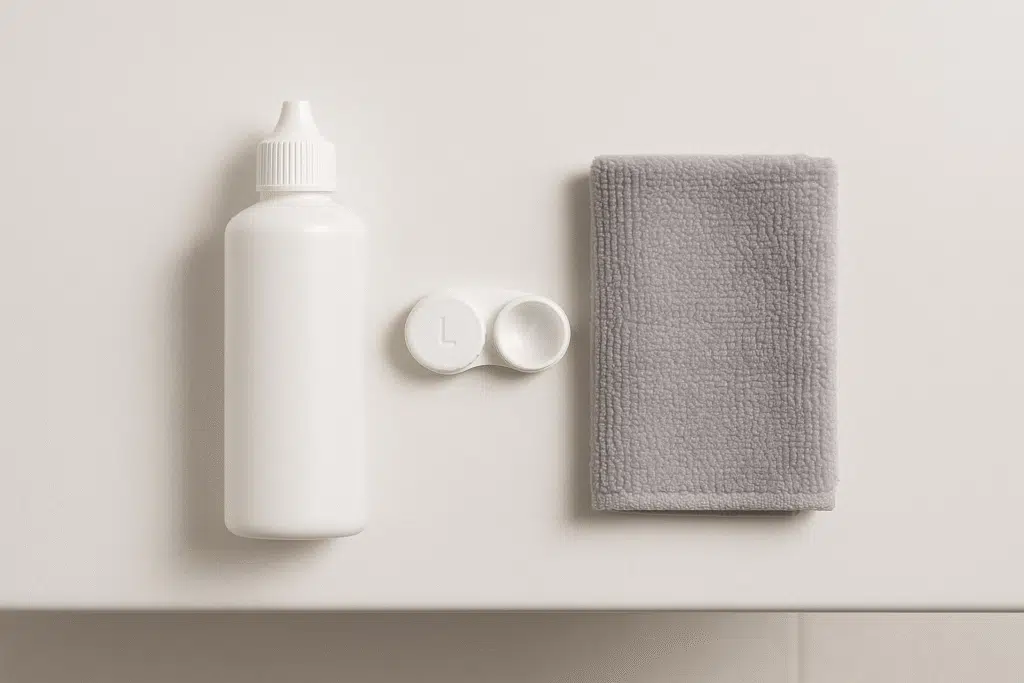
Before you touch your lens case, wash your hands thoroughly with soap and water. Dry them using a lint-free towel to avoid transferring particles into the case.
Step 2: Empty the Old Solution
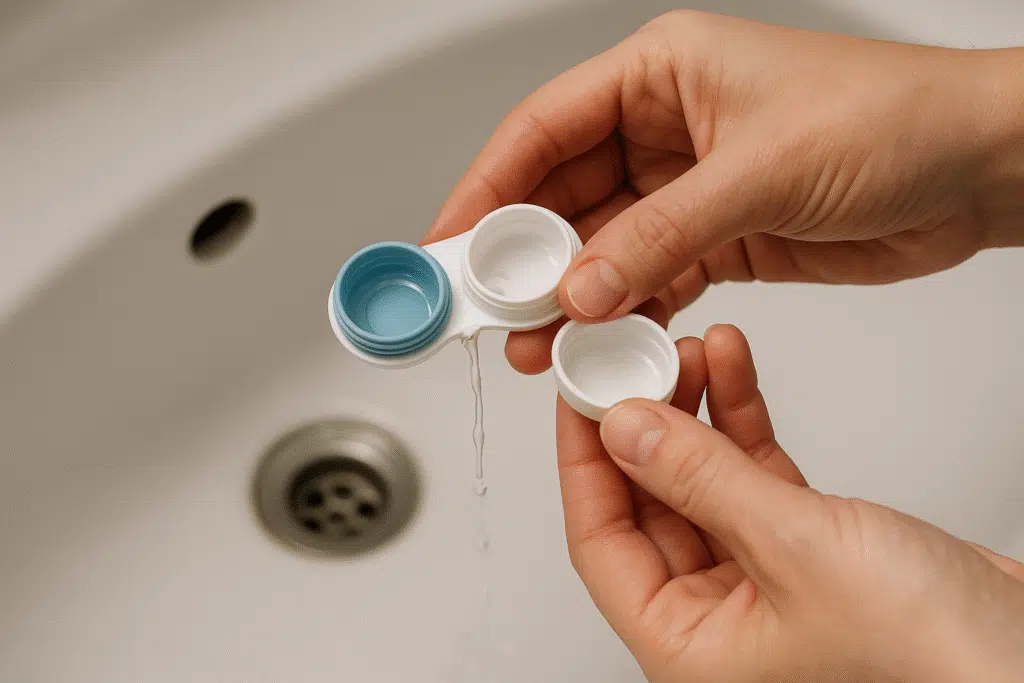
Never reuse yesterday’s solution. After removing your lenses, pour out the used solution completely — even if it looks clean.
Step 3: Rinse the Case with Fresh Solution
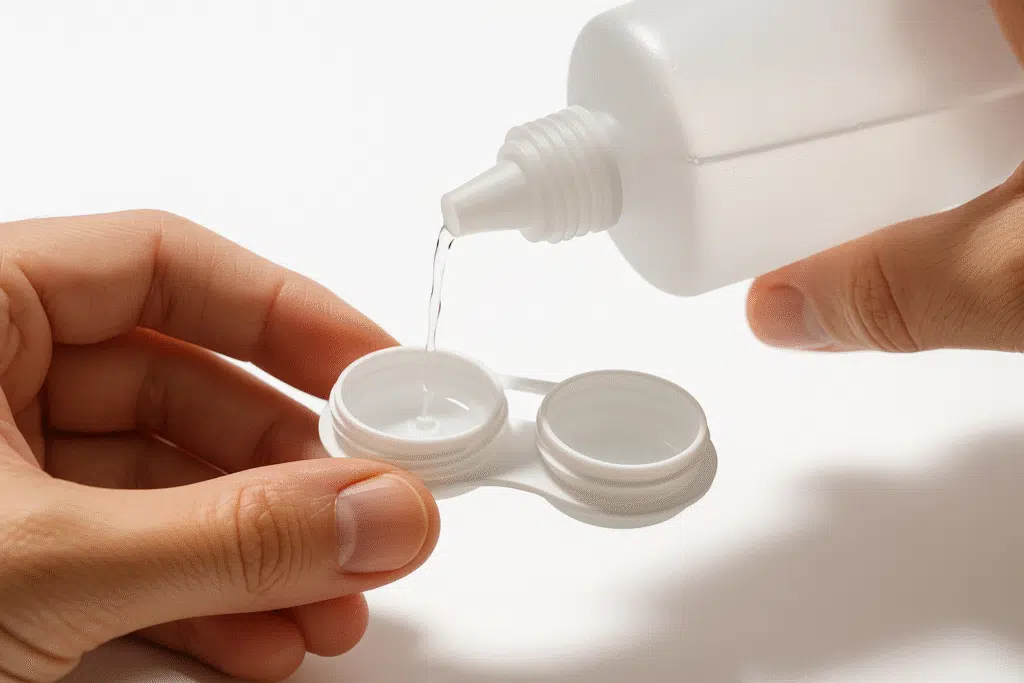
Use only fresh contact lens disinfecting solution to rinse the case. Avoid using tap water because it can contain harmful microorganisms like Acanthamoeba.
Step 4: Rub the Case Interior with Clean Fingers
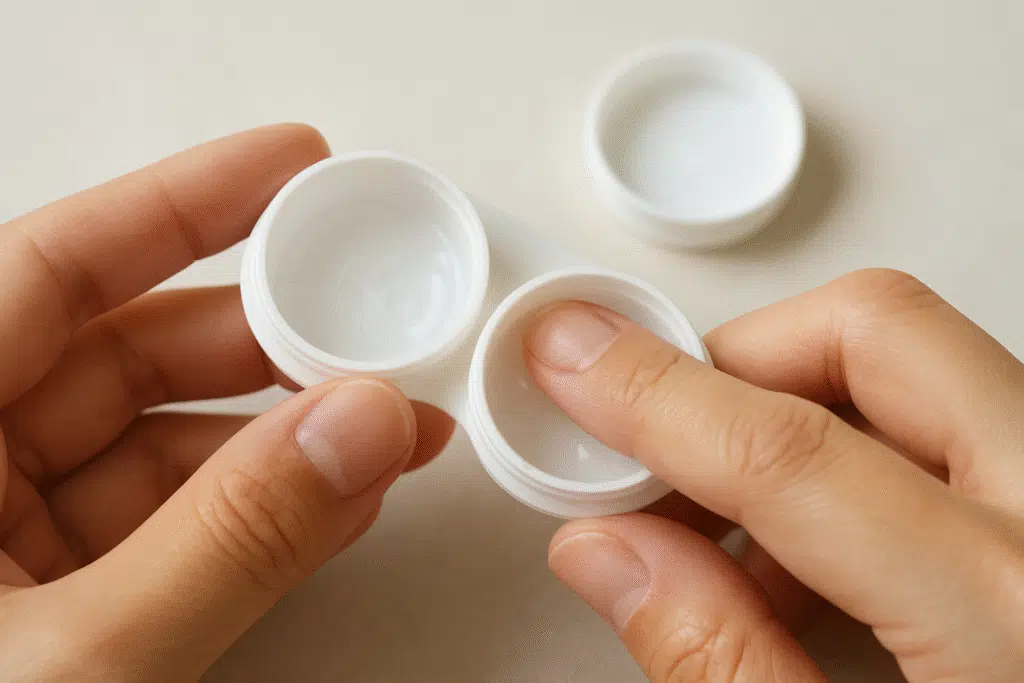
Gently rub the inside walls of the lens wells with clean fingers for at least five seconds per side. This helps dislodge any hidden debris.
Read Also: Glasses Keep Slipping? Try These Optician-Approved Fixes
Step 5: Rinse Again
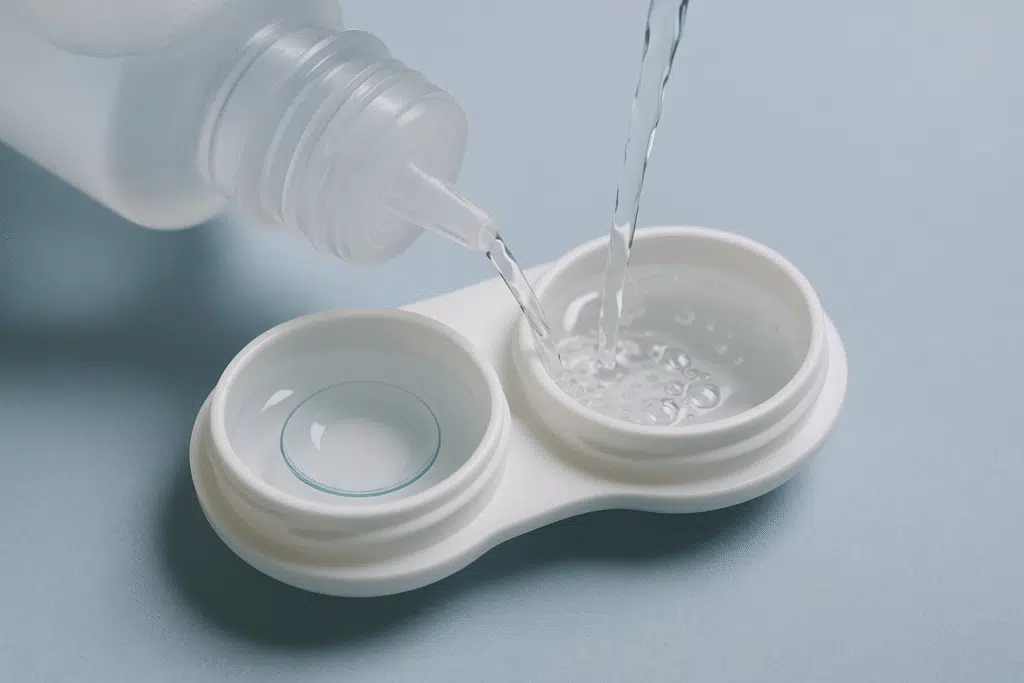
Rinse the case once more with fresh solution to ensure all loosened dirt is washed away.
Step 6: Air-Dry the Case
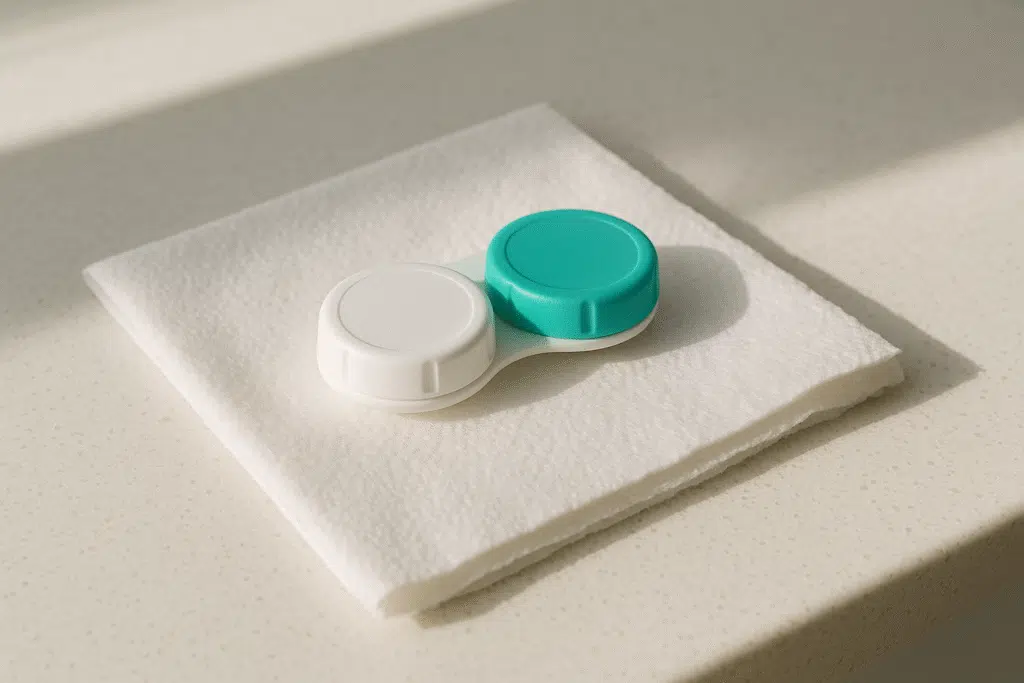
Place the case upside down on a clean tissue or towel in a dry, dust-free area. Let it air-dry completely before using it again. Never put the caps on while they’re still wet.
Why Cleaning Your Lens Case Matters
1. Prevents Eye Infections
When you don’t clean your lens case properly, bacteria and fungi can grow in the leftover lens solution. These microorganisms can transfer to your lenses and then directly to your eyes, leading to painful infections like keratitis.
2. Keeps Your Lenses Comfortable
A dirty case can leave residue on your lenses, making them feel uncomfortable or dry when you put them in. By cleaning the case regularly, you help your lenses stay fresh.
3. Extends Lens Lifespan
Even though contact lenses are replaced on a schedule, improper case hygiene can cause them to wear out faster. Cleaning your case ensures your lenses stay in top condition until their replacement date.
4. Reduces Protein and Lipid Build-Up
Over time, natural proteins from your tears can settle in your case. These deposits can stick to your lenses and affect your vision quality.
FAQs
Q1: How do I clean my contact lens case?
Empty old solution, rinse with fresh solution, rub, rinse again, and air-dry upside down.
Q2: Can I use water to clean my lens case?
No, use only lens solution — water can cause infections.
Q3: How often should I clean my case?
Every day after removing your lenses.
Q4: When should I replace my lens case?
Every 1–3 months, even if it looks fine.
Q5: Why air-dry the case?
It prevents moisture that breeds bacteria.
Read Also: 5 Easy Ways to Add Padding to Glasses Ends in 2025
Final Words
I know from experience that keeping your contact lens case clean is one of the simplest yet most important steps you can take to protect your eyes. When you follow a proper cleaning routine, you’re not just keeping your case fresh — you’re preventing infections, extending the life of your lenses, and making sure every wear feels comfortable.
By making case cleaning a daily habit, replacing it every few months, and avoiding common mistakes, you’re giving your vision the care it deserves.







